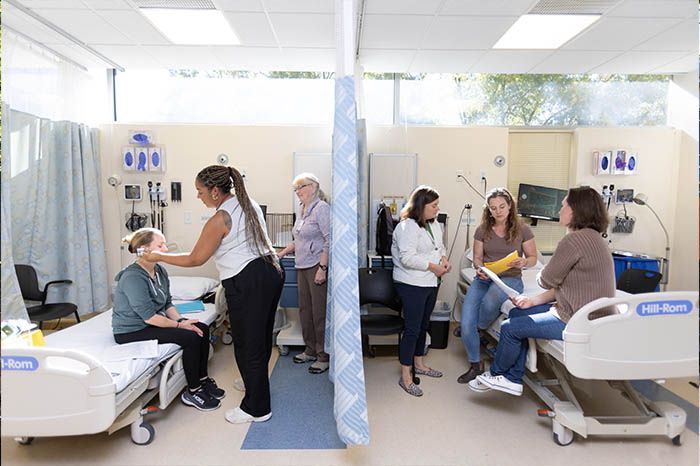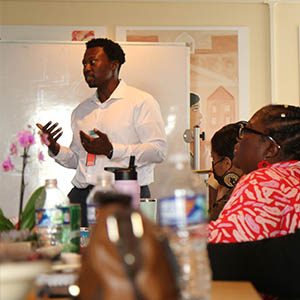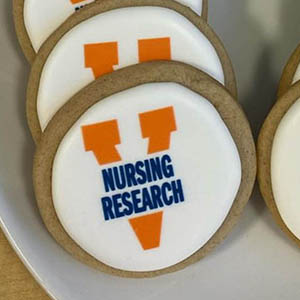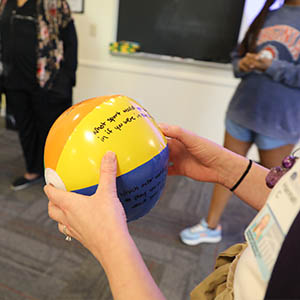
Goal One - Transform Educational Offerings
Until fall 2024, APRN students enrolled in the Advanced Health Assessment class were required to come to Grounds at least 15 times each semester,
and sometimes as much as three times a week.
COVID-19, of course, changed all that, along with expectations about learning going forward. With feedback from students, the majority of whom are working nurses balancing schooling with rich and varied lives outside of school, faculty members are adjusting curricula to ensure programs’ flexibility, “do-ability,” and appeal while preserving the rich learning environments and sense of community for which the School is known.
“It’s always tricky to navigate changing well-established learning spaces, but seeing the combination of flexibility and cohesion these changes create help us know we’re on the right track.”
Goal one champion Shelly Smith, associate dean for graduate nursing programs
With many shifts to come, course changes have been transformative. Thanks to the work of assistant professor Dawn Bourne (BSN ’04, MSN ’10, DNP ’16) and colleagues, Advanced Health Assessment now requires students to be on Grounds about once a month for both the course’s didactic portion and lab. Online learning is more robust. And students still enjoy small cohorts, hands-on learning, and educational efficiencies that help them manage and prioritize their busy lives.
Across undergraduate programs, associate dean of undergraduate programs and goal champion Sara Hallowell is concurrently working with colleagues like professor Gina DeGennaro, department chair of undergraduate programs, to revise and refresh courses like her Oncology and End-of-Life Nursing to accommodate more skills, simulation, and work in the practice setting, per the AACN’s Essentials.
“It’s always tricky to navigate changing well-established learning spaces,” said goal champion Shelly Smith, associate dean of graduate programs, “but seeing the combination of flexibility and cohesion these changes create help us know we’re on the right track.”

Goal 2
Co-create and enhance partnerships to improve health and healthcare
Partnerships with local schools and HBCUs. Regular opportunities for faculty members to work as clinicians providing care at community events. Modeling and mentoring students in those spaces, too. How faculty members such as Randy Jones (BSN ’00, MSN ’02, PhD ’05), goal champion and associate dean for partner development and engagement, are showing up in places and spaces where nursing students and faculty haven't previously or typically been.
Read More
Goal 3
Positioning the School as a leader in nursing science, from discovery to translation
The nursing faculty shortage is troubling. How goal champion Jeanne Alhusen, associate dean for nursing research, with her team in the Office for Nursing Research, is creating novel structures, supports, on-ramps, and opportunities for undergraduates, graduate students, post-doctoral fellows, and emerging nurse scientists to more deeply engage with and commit to futures in nursing science. "There is no one path into nursing science," says Alhusen, but the "hope is that a spark followed by organized support and engagement keeps them on a research track."
Read More
Goal 4
Cultivate trust and equity in all we do within our learning, research, and clinical environments
The work of goal four, says goal champion Melissa Gomes, associate dean for diversity, equity, and inclusion, provides the foundation upon which all other strategic progress is made. And now that the School's student body is "majority minority" for the first time in its history, there's never been a better time to build out programs, resources, structures, events, and curricular programming that intentionally infuses belonging into everything that's done.
Read More



